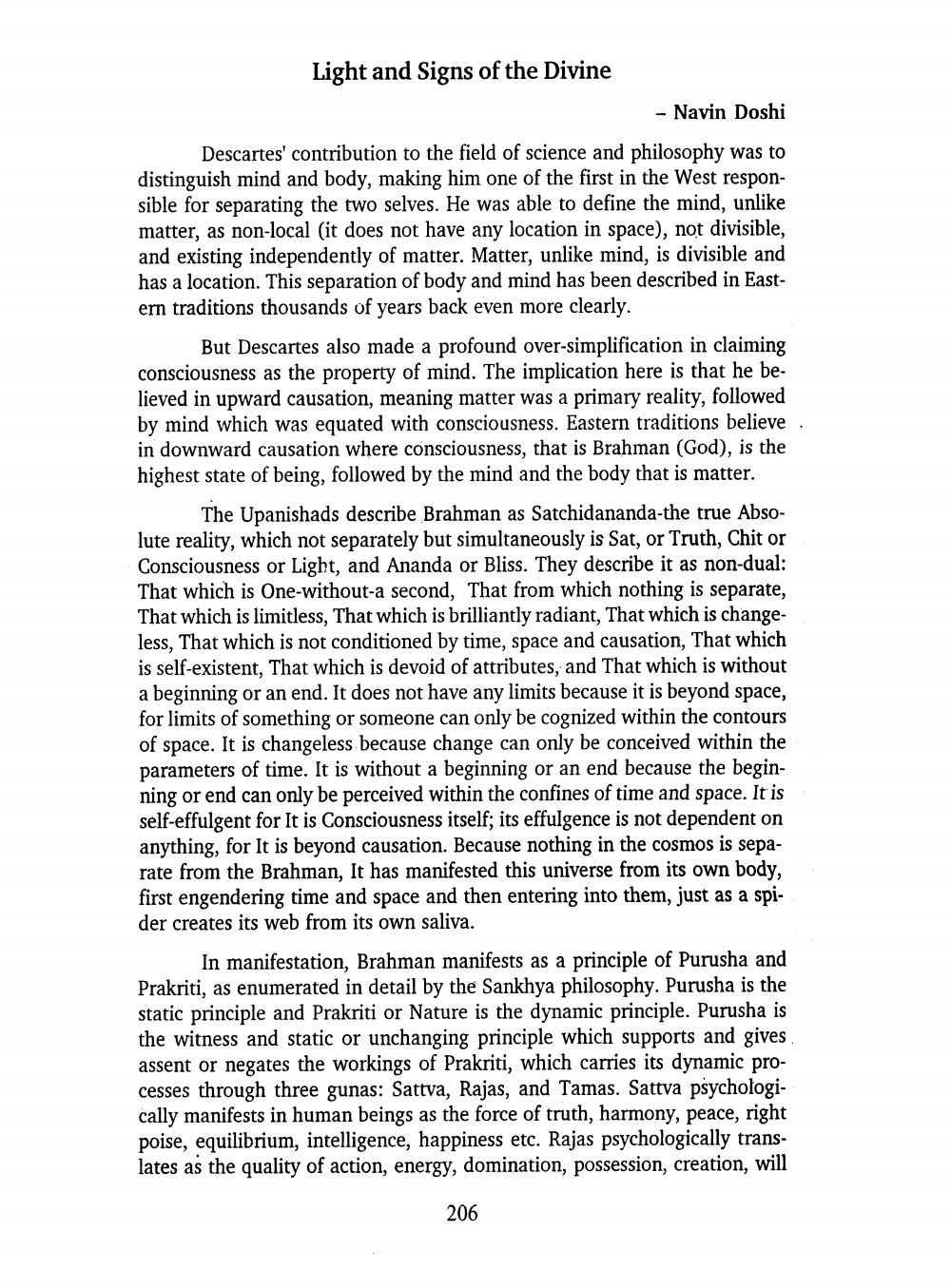________________
Light and Signs of the Divine
- Navin Doshi Descartes' contribution to the field of science and philosophy was to distinguish mind and body, making him one of the first in the West responsible for separating the two selves. He was able to define the mind, unlike matter, as non-local (it does not have any location in space), not divisible, and existing independently of matter. Matter, unlike mind, is divisible and has a location. This separation of body and mind has been described in Eastern traditions thousands of years back even more clearly.
But Descartes also made a profound over-simplification in claiming consciousness as the property of mind. The implication here is that he believed in upward causation, meaning matter was a primary reality, followed by mind which was equated with consciousness. Eastern traditions believe in downward causation where consciousness, that is Brahman (God), is the highest state of being, followed by the mind and the body that is matter.
The Upanishads describe Brahman as Satchidananda-the true Absolute reality, which not separately but simultaneously is Sat, or Truth, Chit or Consciousness or Light, and Ananda or Bliss. They describe it as non-dual: That which is One-without-a second, That from which nothing is separate, That which is limitless, That which is brilliantly radiant, That which is changeless, That which is not conditioned by time, space and causation, That which is self-existent, That which is devoid of attributes, and that which is without a beginning or an end. It does not have any limits because it is beyond space, for limits of something or someone can only be cognized within the contours of space. It is changeless because change can only be conceived within the parameters of time. It is without a beginning or an end because the beginning or end can only be perceived within the confines of time and space. It is self-effulgent for It is Consciousness itself; its effulgence is not dependent on anything, for It is beyond causation. Because nothing in the cosmos is separate from the Brahman, It has manifested this universe from its own body, first engendering time and space and then entering into them, just as a spider creates its web from its own saliva.
In manifestation, Brahman manifests as a principle of Purusha and Prakriti, as enumerated in detail by the Sankhya philosophy. Purusha is the static principle and Prakriti or Nature is the dynamic principle. Purusha is the witness and static or unchanging principle which supports and gives assent or negates the workings of Prakriti, which carries its dynamic processes through three gunas: Sattva, Rajas, and Tamas. Sattva psychologically manifests in human beings as the force of truth, harmony, peace, right poise, equilibrium, intelligence, happiness etc. Rajas psychologically translates as the quality of action, energy, domination, possession, creation, will
206




